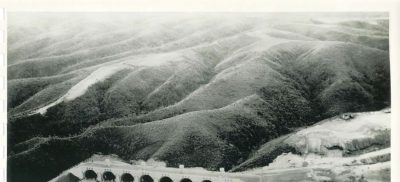China and Russia Have Long Endured Massive Threats
The United States holds the right to position missiles and troops wherever it chooses.

In April 1962, the Kennedy administration ordered nuclear missiles to be sent to Japan’s Okinawa Island. The weapons were directed at the People’s Republic of China, a nation the Americans had “lost” to Communism 13 years before.
President John F. Kennedy‘s decision to aim missiles at China occurred six months before the Cuban Missile Crisis, known as the October Crisis in Cuba. The missiles Kennedy directed at Mao Zedong’s China were “near identical” to those aimed at the US, after the Soviet Union sent nuclear-armed weapons to Cuba in October 1962.
The American missiles on occupied Okinawa – an island just over 500 miles from China’s coast – were “over 75 times the power of the bomb dropped on Hiroshima” in August 1945. The nuclear weapon that leveled Hiroshima killed about 80,000 people initially, mostly civilians. However, further tens of thousands later died after succumbing to severe radiation poisoning.
In the early 1960s, China possessed by far the world’s largest population, at almost 700 million. Any order obeyed to fire such destructive weapons at China would have killed unprecedented numbers. Yet the American missiles on Okinawa remained hidden from public knowledge, and has only come to light in recent times. The reason for Kennedy’s order for missiles to be readied on Okinawa, can be traced to intense friction between two of Asia’s largest countries.
A 1962 aerial photograph shows Okinawa’s first Mace missile site at Bolo Point, Yomitan. (Source: Larry Johnston via APJJF)
During 1962, antagonism soared between China and American-backed India – primarily over border disputes along the Himalayas. It culminated in the Sino-Indian conflict, starting on 20 October, with much of the fighting occurring at over 4,000 meters. This forgotten conflict also began in the middle of the Cuban Missile Crisis, as the Americans were entirely distracted with Cuba. After a month of bloody fighting, China emerged victorious having secured territorial gains.
History, up to the current day, suggests the US holds the right to erect weapons wherever it chooses, ignoring the potential consequences. For example, in 1961, president Kennedy positioned intermediate-range “Jupiter” nuclear missiles in Italy and Turkey – this time aimed at Russia. The Turkish border is little more than 300 miles from Russia, separated alone by diminutive Georgia.
None of this was lost on the Russians. In May the following year (1962), the Soviet president Nikita Khrushchev complained to a confidant that the Americans “have surrounded us”. Kennedy’s reckless deployment of missiles was also a crucial factor leading up to the Cuban Missile Crisis.
Behind the thinking of his Cuban missile decision, Khrushchev explained following his retirement that the Americans
“would learn just what it feels like to have enemy missiles pointing at you; we’d be doing nothing more than giving them a little of their own medicine”.
The enormous threats against Russia also had a deeper psychological impact. Over the past century and more, Russia was repeatedly invaded and almost destroyed by invading armies. From Napoleon Bonaparte’s 1812 offensive, through to Operation Barbarossa overseen by Adolf Hitler in 1941.
The intimidation of Russia, a long-time nuclear power, has continued apace to the present day. One significant menace is the continued existence of NATO as an organization – and the presence of its troops and weapons along Russia’s frontiers. NATO receives much of its funding from America, so is in reality a tool of imperialism, posing a significant global security threat.
In more rational times Dwight D. Eisenhower, NATO’s first supreme commander, wrote in 1951 that NATO
“will have failed” if “in 10 years all American troops stationed in Europe… have not been returned to the United States”.
Eisenhower would become a re-elected US president (1953-61), so his was not a voice without weight. It would be interesting to gauge his reaction if he knew that, by 2018, American troops were still present on European soil. This reality may have disturbed George Kennan too, the farsighted former US ambassador to the Soviet Union and Yugoslavia, himself no dove. In 1996 Kennan described NATO expansion eastwards, in continued violation of agreements, as “a strategic blunder of potentially epic proportions”.
Meanwhile, a further critical element in the placing of Soviet missiles in Cuba, was the Kennedy administration’s assaults on the island nation. There was the failed Bay of Pigs invasion in April 1961, which ended in a Cuban rout of US-backed forces. Stung by this embarrassment, in January 1962 Kennedy outlined that “the Cuban problem” is “the top priority in the United States government”.
The ensuing Operation Mongoose brought the “terrors of the earth” to Cuba – a quote attributed to Arthur Schlesinger Jr., Kennedy’s top Latin American advisor. In the months before the missile crisis, Cuba was subjected to widescale terrorist attacks directed from America. This included the bombing of Cuban hotels and petrochemical plants, poisoning of crops and livestock, attacks on fishing boats, the tainting of sugar exports, etc.
In March 1962, it was made clear that the assaults were to lead to “final success” which would “require decisive US intervention”. The renewed invasion of Cuba was dated for October 1962 – it is no coincidence that Khrushchev sent his missiles to Cuba during the same month.
As the missile crisis peaked, the world came perilously close to a nuclear war, largely due to Kennedy’s hegemonic policies. This was all concealed from the American public, who were repeatedly informed the blame lay squarely with the USSR and its Cuban ally.

Bosch and Posada (Source: Cuba Headlines)
Following the de-escalation in late October, the US immediately recommenced terrorist operations against Cuba. These murderous acts continued for decades in various forms. This included American support for the Cuban exiles, Luis Posada Carriles and Orlando Bosch, two of the worst international terrorists of the post-World War II period.
Posada Carriles and Bosch are most infamously remembered for masterminding the 1976 destruction of a Cuban airliner, killing all 73 people aboard. However, the duo were also responsible for countless other terrorist attacks on embassies, consuls, tourist industries, ambassadors, civilians, etc. – not just in Cuba – but across Latin America.
Furthermore, the US continues its blockade of Cuba, which has lasted for more than five decades – despite opposition from virtually the entire world. The embargo was first introduced by Kennedy himself in October 1962.
After visiting Cuba two years ago, then president Barack Obama said he and Raul Castro “continue to have serious differences, including on democracy and human rights”. One could forgive the Cuban leader for being somewhat perplexed by this statement. Not mentioned by Obama was America’s efforts to bring “democracy and human rights” to Cuba, in the form of vicious terrorist assaults and economic strangulation.
Nor did Obama highlight Cuba’s central role in liberating southern Africa from apartheid. South Africa’s racist regime was heavily supported by the US, yet it appears trivial facts such as these are not worthy of mention by Obama, or indeed, the mainstream press.
Since the 1950s, the American record in introducing “human rights” and “freedom” to the world makes something of a mockery of its projected image. Instead, it is Cuba that has long been vilified by Western elites for supposed human rights abuses.
*
Shane Quinn obtained an honors journalism degree. He is interested in writing primarily on foreign affairs, having been inspired by authors like Noam Chomsky.

